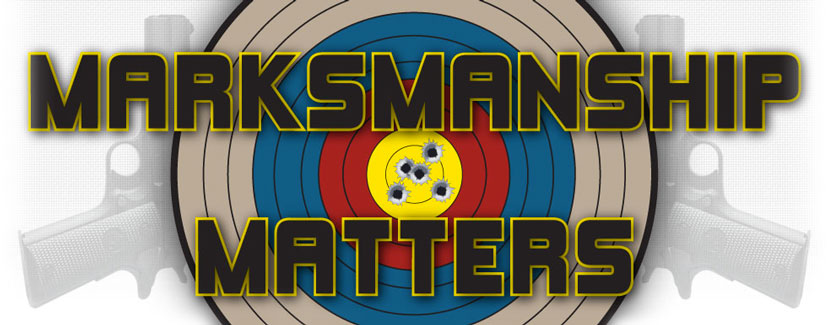Lever action rifles have limited cartridge capacity. They are slower to shoot and to reload than semi automatics. They require more skill to operate efficiently than semi automatic rifles. So who would select a lever action rifle for self defense and why?
There are several groups of people who might consider using a lever action rifle for self defense. “Cowboy Action Shooters”(CAS) who know how to run these guns properly would be at the top of the list. These folks already own lever action rifles and they shoot them with great speed and skill in competition on a regular basis.
People who live in jurisdictions where handguns cannot be possessed will find a short lever action carbine can be a handy substitute in the home or business.
For those folks who have waited too long to acquire a semi automatic rifle, the lever action rifle provides them with another option.
When traveling through states which restrict the possession of semi auto rifles, the lever action makes an excellent traveling companion.
The price of an AR15 today may be prohibitive for many people. A good lever action rifle can be had for half the price.
The lever action rifle does not scare the sheeple like a semi automatic rifle might. If your lever action rifle were stolen from your business or vehicle you would likely not be treated as if you lost a nuclear device when you reported the theft to the police.
If you were to use a lever action rifle in self defense it would not have the stigma of a military style weapon in the eyes of a law enforcement officer, the District Attorney or a jury. Unlike the black rifles and the AK type weapons, the lever action is as wholesome and American as John Wayne and apple pie.
The lever action rifle in skilled hands does not give up as much fighting efficiency to the semi automatic rifle in a short range self defense situation as you might imagine. Lever Action rifles in .357 Magnum have very manageable recoil. A very skilled shooter can accomplish aimed fire as quickly with a lever action as with a semi automatic rifle.
The .357 Magnum revolver has an excellent reputation as a fight stopper. The .357 Magnum, when fired from a 16 to 20 inch rifle barrel develops approximately 50% more velocity and 100% more energy than when fired from a 4 inch revolver Due to the increase in power, the .357 Magnum Rifle is surprisingly effective in the self defense role.
Because the .357 Magnum is first a “hand gun cartridge,” it is designed to burn most of its powder in a short barrel. As a result, the muzzle flash tends to be less than with most center fire rifles. Another plus is the fact that the report is not as loud as a short barreled .223 rifle which can be deafening when fired indoors.
The .357 Magnum fired from a Carbine or Rifle has a higher optimum game weight rating than the .223 at close range. With the right Ammunition, the .357 Magnum fired from a rifle will exceed the barrier penetration of the .223 except when the latter is using steel penetrator projectiles.
Very low recoil .38 Special ammunition can be used for less expensive practice. For those who are very sensitive to recoil, .38 Special +P ammo fired from a 16 inch barrel provides .357 Magnum “handgun ballistics” and as such achieves decent close range defensive power.
The point blank range of the .357 Magnum Rifle is about 140 yards which should be more than adequate for most urban self defense situations. Magazine capacity varies from 9 to 13 cartridges depending on which rifle is selected.
The lever action can be “kept ready” by topping off the magazine at any point during the action. Firing a few rounds and then replacing them in the magazine whenever no target is available, will always provide the shooter with a fully loaded weapon should he be rushed.
Lever action rifles are available in calibers more powerful than the .357 Magnum. Some of the most popular are:
.44 Magnum
.45 Colt
.30/30
.45/70
The .44 Magnum will provide smashing power at the expense of additional recoil and slower follow up shots.
The .30/30 will defeat level 3A body armor and provide additional range in exchange for having fewer rounds in the magazine and more recoil.
The .45/70 will defeat barriers like automobiles with ease and provide protection against the largest predators in North America. Obviously a heavy load in .45/70 will generate a good deal of recoil. A light load in the .45/70 is more than adequate for close range self defense.
Our preference for the .357 Magnum is based on the lighter recoil, the ability to use .38 Special ammunition for practice, the wide spread availability of both .38 Special and
.357 Magnum ammunition and the versatility of the weapon system for a variety of activities.
By single loading the cartridges into the firing chamber, the .357 Magnum , .44 Magnum and .45 Colt lever action rifles can shoot CCI factory shot loads. Such cartridges are useful for shooting rats, mice and snakes at close range without the danger of a ricocheting bullet. This option provides the lever action rifle shooter with even more versatility.
Our preference when selecting a .357 Magnum lever action rifle for self defense would be:
1873 Winchester
1894 Marlin
1892 Winchester
The 1873 Winchester has been made recently by Winchester. It is also made by Cimarron, Uberti and others.
The 1894 and 1895 Marlins have been made by Marlin and are currently being produced by Remington.
The 1892 Winchester is made by Rossi and others.
Most of these lever actions will require the services of a gunsmith who specializes in lever action rifles in order to be fully serviceable. They are usable however with a few minor modifications which any competent gunsmith can provide.
Very few people know how to manipulate a lever action rifle in a fight. We do. I have been using lever action rifles in competition for nearly 20 years and Stacey for about 12 years. We have done very well in that venue.
We have integrated techniques from our Urban Police Rifle Course, our Defensive Shotgun Course and our Single Action Revolver course into our doctrine for the Defensive Lever Action Rifle Course.
If you have an interest in learning how to fight with a lever action rifle please contact us.
Larry and Stacey Mudgett
Marksmanship Matters
801-669-1886
www.marksmanshipmatters.com
Larry and Stacey Mudgett
Copyright 2013 Marksmanship Matters
Email Thread with excellent extensions to the above article
I have some some information for you on several subjects.
You indicated an interest in a .30/30
I have included an article on the lever action rifle for self defense use.
I would add the following observations.
The .30/30 has a point blank range of approximately 175 yards.
The .357 Magnum and .44 Magnum lever action carbines have a PBR of 125 yards +.
The .30/30, being a rifle cartridge has a heavier (read slower) action required to handle rifle pressures.
The pistol caliber carbines have a magazine capacity of 9 to 13 cartridges.
The .30/30 Carbine has a magazine capacity of 5 with a 16 inch barrel and 6 with a 20 inch barrel.
Ammo for the .30/30 is of course more expensive.
Recoil is a bit more with follow up shots coming more slowly for multiple targets (.30/30)
The .30/30 will eat soft armor at a good distance.
The .357 Magnum will do so at close range.
Power wise a typical .30/30 will shoot a 160 grain bullet at 2,400 FPS from 20 inch barrel
A .357 Magnum will shoot a 158 grain bullet at 1,800 FPS from a 16 inch barrel.
The .357 Magnum will shoot a 125 grain bullet at about 2,100 FPS
Light practice loads are available for the .357 in the form of .38 Specials.
My favorite loads in the .357 carbine are 180 grain which are about 1,600 FPS.
Ballistic gel tests with the .357 Magnum carbine are impressive.
The ,44 is of course a power house when fired from a carbine.
The .357 magnum fired from a carbine is approximately equal to a .44 magnum fired from a 4 or 5 inch revolver.
A .44 fired from a carbine is approximately equal to a .454 fired from a 4 inch revolver.
Needless to say they are all effective. All three of these calibers will eat cars with right loads.
If you are willing to work with a harder action and a bit slower follow up shots and a reduced magazine capacity the power of the .30/30 is of course superior.
Another system might be to get a .357 Magnum for indoors and low cost practice and a .30/30 for out doors and woods use.
Buffalo Bore now loads a 190 grain .30/30 load at about 1,900 FPS designed for Moose, Elk and Bears to about 150 yards.
Although a .357 180 grain at 1,600 FPS would penetrate in and out of large bears skull and continue on through several feet of chest cavity.
Note that penetration decreases when velocities exceed 1,500 or 1,600 FPS contrary to what most believe. This is one of the reasons that we prefer 180 grains in the .357 and 300 grains in the .44
We prefer the Marlin with the side ejection and the ease of mounting an aperture sight or an optic.
Add a sling and a butt cuff for some extra rounds and the carbine is ready.
I will also be forwarding several recent emails that we have sent on this and other subjects.
We hope that this is helpful.
Larry and Stacey





My boyhood mentor LTC Ellis Lea (USA, Ret.) was a West Virginia State Trooper before entering the Army during WWII. Later as a firearms instructor for the Office of Public Safety of the U.S. Agency for International Development, he referred to the Winchester 94 as the “Appalachian Assault Rifle” and compared its combat utility to the US Carbine cal. .30 M1.
Then as now, lever guns have the advantage of non-threatening, familiar appearance which “doesn’t scare the natives. In 19th Century close quarter battle, lever actions had tactical advantages, offering a useful magazine capacity and rapidity of fire compared to single-shot breechloaders and early bolt-guns. The Ottoman cavalry and Pancho Villa agreed. Most bolt-rifles other than the Krag, cannot be topped off without taking them momentarily out of the fight, whereas you can shove more rounds through a lever-action loading gate whenever you need to. Against bandits in dusty border towns a lever gun was as simple as it ever got and it still works.